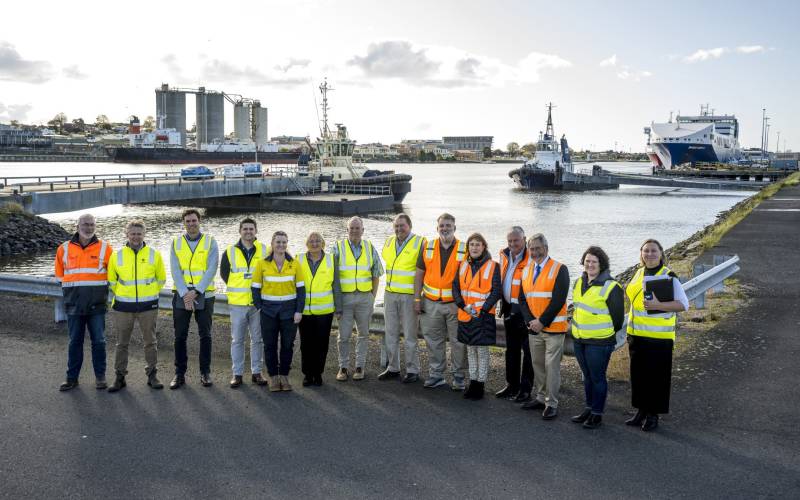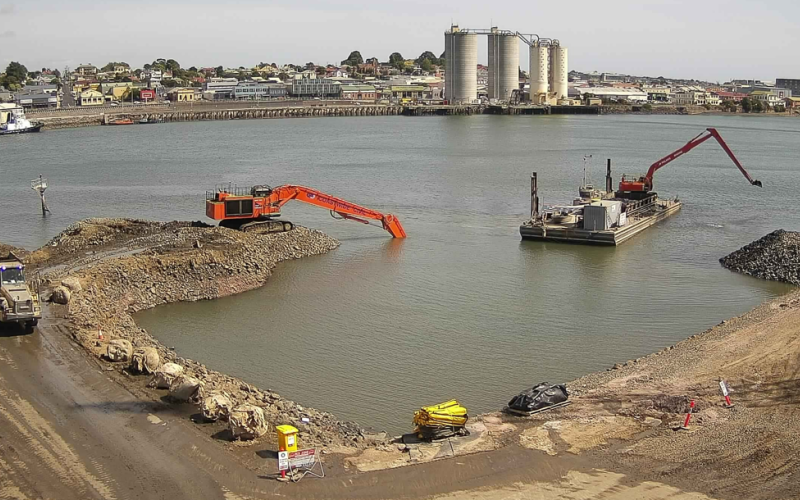What is the role of the TACC?
The TACC is an independent advisory committee. It has been established as a forum for engagement, consultation and collaboration between TasPorts, peak bodies and other relevant local stakeholders on the planning, environmental monitoring, and practice standards of all future TasPorts dredging programs.
The TACC will assess likely environmental or economic interests and impacts of dredging works, and track and monitor how reporting and regulatory requirements are carried out. The TACC will provide TasPorts with advice on these matters.
TACC Membership

TACC members will be appointed to ensure that Port authorities and regulators make informed decisions.
As dredging programs are identified and planning is initiated, the TACC will identify relevant stakeholders locally at the specific port location, who will be invited to join the Committee as Port representatives. Port representatives will add critical local knowledge and will include representatives from local councils, surf lifesaving clubs, fishing organisations and local environmental and community groups. As necessary, various industry experts will provide input into TACC discussions.
Current TACC membership includes an independent Chair and the following organisations:
- Tasmanian Seafood Industry Council
- Devonport City Council
- Cradle Coast Authority
- Environmental Protection Authority
- Department of Natural Resources and Environment
- Mersey Yacht Club
- TARfish
- TasPorts
- Harbour Master
- Local recreational fisherman
- Local community member
What is dredging?
Dredging refers to the practice of removing or excavating materials from the seabed or the bottom of waterways, most commonly in shipping channels, ports, rivers and lakes. The process involves removing the material, such as sand, rock, clay or silt, transporting the dredged material, and safely unloading it at an approved disposal site.
There are two common reasons for dredging:
- Maintenance dredging is performed to ensure that shipping channels, berths and harbours remain a certain depth to allow ships to pass through without running aground.
- Capital dredging is new work carried out to create new shipping channels or deepen existing berths to enable larger ships and vessels to utilise the waterway.
How is dredging performed?

There are two ways that dredging can be performed:
- Marine-based dredging is performed from the water, usually using an excavator referred to as a backhoe dredge, which is mounted on a floating barge and manoeuvred by tugboats.
- Land-based dredging is best suited for excavating small volumes of material that are close to the shore or harbour. This might be appropriate for maintenance or capital dredging works involving new or existing berths (where vessels dock to be loaded or unloaded), as the activities are adjacent to the land allowing use of land-based machinery such as large, long-reach excavators.
If there is a lot of rock in the excavation zone, sometimes additional equipment, such as drum-cutters or underwater rock hammers are used to break-up the rock so the excavator can remove it.
Is dredging regulated?

Dredging is regulated and cannot be carried out unless the activities comply with relevant local, state and federal legislation. Various environmental and planning laws, and policies apply to dredging, to mitigate disturbance to marine habitat and organisms, and manage dredge material disposal activities.
During the initial planning stage of any capital or maintenance dredging program, the TACC will be involved in preliminary assessments process to help determine what legislation and policies apply and ensure all requirements are satisfied according to best practice standards.
Chair's Summary and Reports
To gain more insight into the workings of the TACC and the decisions being made, you can read the Chair's Summary after each meeting. We will also share any scientific reports commissioned in the interests of transparency and openness.
TACC Terms of Reference 19 01 22 - 212.5 KB
Environmental Assessment Decision 03 05 22 - 640.4 KB
TACC Inaugural Meeting Chairs Summary 19 01 22 - 82.1 KB
TACC Meeting 2 Chairs Summary 09 02 22 - 164.5 KB
TACC Meeting 3 Chairs Summary 11 04 22 - 136.1 KB
TACC Meeting 4 Chairs Summary 30 06 2022 - 106.2 KB
TACC Meeting 5 Chairs Summary 17 08 2022 - 108.4 KB
TACC Meeting 6 Chairs Summary 19 09 2022 - 166.0 KB
TACC Meeting 7 Chairs Summary 2 11 2022 - 108.9 KB
TACC Meeting 8 Chairs Summary 02 11 2022 - 116.8 KB
TACC Meeting 9 Chairs Summary 17 05 2023 - 155.1 KB
TACC Meeting 10 Chairs Summary 10 09 2023 - 108.2 KB
How to get involved?
If you would like to get involved with the TACC or learn more about current TasPorts dredging programs, please contact the TACC via email at: tacc@tasports.com.au


